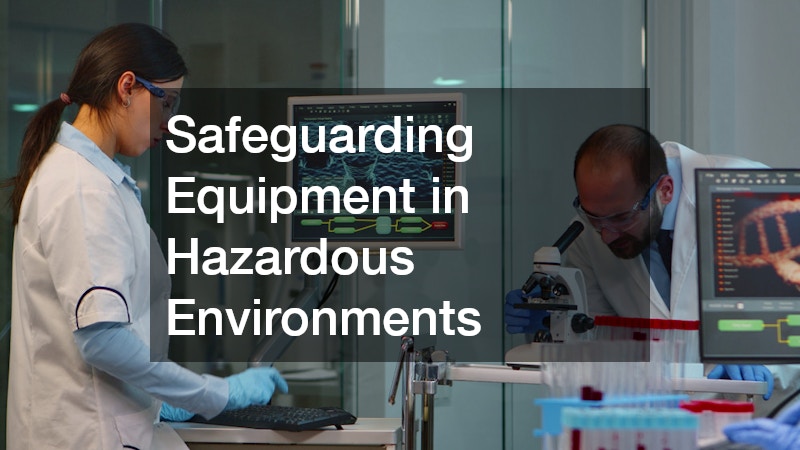Smart Factories and the Evolving Industry Landscape
The industrial sector is undergoing a transformation unlike anything seen in previous decades. With the rise of advanced digital technologies, automation, and sustainable manufacturing practices, traditional factories are evolving into smart factories—dynamic, interconnected environments where efficiency, precision, and safety converge. Smart factories leverage real-time data analytics, intelligent machinery, and automated processes to optimize production workflows, reduce downtime, and increase overall competitiveness in the global marketplace.
This evolution is reshaping the industry landscape, impacting every stage of the manufacturing process. From supply chain management to quality control, the integration of smart technologies allows manufacturers to respond more rapidly to changing market demands and improve operational resilience. The shift is not only about technology adoption; it also reflects a broader strategic approach where innovation, sustainability, and safety are prioritized simultaneously.
Modern manufacturing facilities are increasingly adopting systems that ensure operational reliability while minimizing environmental impact. This includes sophisticated storage solutions, advanced safety protocols, precision testing equipment, and efficient chemical processing techniques. Each component contributes to a factory’s ability to remain agile, cost-effective, and environmentally responsible. As manufacturers continue to explore innovative strategies, industrial operations become a complex, interconnected ecosystem where every decision—from equipment selection to process design—has a tangible impact on efficiency and competitiveness.
In this blog, we will explore key areas of smart factory operations, examining how cutting-edge technologies and processes are transforming the way modern industries operate. Each section highlights practical solutions and innovations that are shaping the future of manufacturing, illustrating how smart factories are redefining standards for efficiency, safety, and sustainability.
Optimizing Storage Efficiency for Modern Warehouses
In the context of modern manufacturing, storage efficiency plays a crucial role in ensuring operational fluidity. Warehouses today are no longer mere storage spaces; they are dynamic hubs of inventory management where speed, accessibility, and organization directly influence production efficiency. A well-designed pallet racking system is central to achieving this goal, enabling high-density storage and seamless retrieval of goods.
The choice of pallet racking system affects both the physical layout of a warehouse and its overall workflow. Smart factories integrate automated shuttle systems, vertical lifts, and robotics with conventional racking solutions to optimize space utilization. This integration not only increases storage capacity but also reduces manual handling errors, thereby minimizing downtime and labor costs.
Understanding the broader industry landscape helps manufacturers make informed decisions about storage infrastructure. Warehouses must adapt to fluctuations in product demand, seasonal spikes, and the increasing prevalence of e-commerce logistics. By investing in innovative racking solutions, facilities can ensure that goods are stored safely and retrieved efficiently, allowing for rapid fulfillment and streamlined operations.
Incorporating real-time inventory tracking into pallet racking systems allows managers to monitor stock levels accurately, forecast inventory needs, and reduce waste. These systems also facilitate easier integration with automated guided vehicles (AGVs) and warehouse management software, creating a fully connected storage ecosystem.

Protecting Facilities With Advanced Safety Solutions
Safety is paramount in modern manufacturing, particularly as facilities become more technologically advanced and complex. Implementing the right types of fire suppression systems is critical to safeguarding employees, equipment, and valuable assets. Fire hazards in industrial environments can range from chemical reactions to electrical malfunctions, requiring a comprehensive approach to risk management.
The industry landscape emphasizes proactive safety measures, combining fire detection technologies with suppression mechanisms designed to act swiftly and effectively. Advanced systems may include water mist, foam-based, and gaseous suppression solutions, each suited to specific types of industrial hazards. These systems are integrated with building monitoring software to provide real-time alerts and automated responses, ensuring minimal disruption in the event of an emergency.
By adopting cutting-edge fire suppression technologies, smart factories reduce potential downtime, prevent property loss, and maintain regulatory compliance. Additionally, advanced safety protocols help build a culture of awareness and preparedness among employees, which is essential for sustaining long-term operational reliability. Facilities leveraging comprehensive safety solutions can gain a competitive advantage, as clients and partners increasingly prioritize partnerships with manufacturers that demonstrate strong risk management practices.
Ensuring Precision Through Controlled Environmental Testing
Controlled environmental testing is a cornerstone of product quality and reliability in smart manufacturing. Temperature test chambers, for instance, provide precise environmental conditions to simulate real-world operating scenarios, allowing engineers to assess product performance under extreme temperatures.
Within the evolving industry landscape, the use of temperature test chambers ensures that products meet rigorous quality standards before reaching the market. These chambers replicate temperature fluctuations, humidity levels, and other environmental variables, enabling manufacturers to identify potential weaknesses and improve designs proactively.
Smart factories incorporate automated monitoring systems within temperature test chambers, ensuring that testing protocols are consistently applied and results are accurately recorded. This reduces human error and accelerates the product development cycle, allowing manufacturers to bring high-quality products to market faster. Environmental testing also supports compliance with international standards, which is increasingly important as manufacturing becomes more globalized. By simulating diverse conditions, companies can verify product reliability across various climates and applications, reinforcing brand credibility and customer confidence.

Exploring Sustainable Solutions for Material Decomposition
Sustainability is no longer optional in modern manufacturing; it is a central consideration shaping the industry landscape. Biodegradation research plays a pivotal role in identifying environmentally responsible solutions for material decomposition, reducing waste, and supporting circular economy initiatives.
Manufacturers are increasingly exploring materials that decompose naturally or can be safely processed for reuse. Biodegradation research informs the development of polymers, packaging materials, and chemical compounds that minimize ecological impact without compromising functionality or durability.
In a smart factory setting, these sustainable approaches are integrated into production workflows, from raw material selection to end-of-life product management. Real-time monitoring systems track material usage and decomposition rates, providing insights that guide further process optimization. By incorporating sustainable materials and decomposition strategies, manufacturers can reduce disposal costs, comply with environmental regulations, and appeal to environmentally conscious consumers.
Boosting Energy Efficiency With Thermal Management Techniques
Energy efficiency is a crucial consideration in the evolving industry landscape. Mechanical insulation service plays a significant role in minimizing energy loss, maintaining stable process temperatures, and enhancing overall operational efficiency.
Smart factories utilize advanced thermal management systems to optimize energy consumption across production lines, HVAC systems, and process equipment. Mechanical insulation service ensures that heat transfer is controlled, reducing unnecessary energy expenditure and lowering operational costs.
Proper insulation techniques prevent equipment from overheating, extend the lifespan of machinery, and improve workplace safety. In addition, energy-efficient practices contribute to sustainability goals by reducing greenhouse gas emissions and overall environmental impact. By integrating mechanical insulation with predictive maintenance systems, manufacturers can detect thermal anomalies early, preventing potential failures and unplanned downtime. This proactive approach aligns with broader industry trends, where efficiency, reliability, and sustainability are interconnected priorities.

Enhancing Purification and Filtration Performance
High activated carbon products are increasingly central to purification and filtration processes in modern manufacturing. These materials effectively remove impurities, contaminants, and toxins from air, water, and chemical streams, ensuring product quality and compliance with safety standards.
The industry landscape underscores the importance of maintaining clean production environments. High activated carbon products enable facilities to meet stringent environmental regulations while improving operational efficiency and protecting sensitive equipment from damage caused by particulate buildup.
In smart factories, filtration systems equipped with activated carbon products are integrated with automated monitoring platforms. This allows for continuous performance evaluation, predictive maintenance, and immediate adjustments to filtration parameters, enhancing both reliability and throughput. The versatility of high activated carbon products extends across multiple applications, from industrial water treatment to chemical processing and air purification.
Maximizing Chemical Process Recovery and Yield
Chemical manufacturing relies on efficient process recovery to maximize yield, reduce waste, and improve profitability. Sulfur recovery catalysts play a vital role in this aspect by facilitating the conversion of sulfur compounds into reusable forms, minimizing emissions, and enhancing chemical process efficiency.
In the industry landscape, the use of sulfur recovery catalysts reflects a growing emphasis on sustainable production methods and resource optimization. These catalysts accelerate chemical reactions while ensuring that hazardous byproducts are safely transformed, reducing environmental impact and regulatory risk.
Smart factories integrate sulfur recovery catalysts within automated chemical processing systems, allowing for precise monitoring, temperature control, and reaction optimization. This integration improves both product yield and operational reliability, ensuring that chemical processes meet strict performance and safety standards. By employing advanced catalysts, manufacturers can achieve higher efficiency with lower raw material consumption.

Safeguarding Equipment in Hazardous Environments
Industrial operations often involve environments where equipment and personnel face significant risks due to flammable gases, volatile chemicals, or explosive atmospheres. An intrinsically safe barrier is essential for protecting both workers and sensitive machinery in these conditions.
Within the evolving industry landscape, intrinsically safe barriers limit the energy transmitted to hazardous areas, preventing sparks, overheating, or electrical faults that could trigger accidents. These barriers are integrated into electrical and control systems to ensure safe operation without compromising process efficiency.
Smart factories employ intrinsically safe barriers alongside robust monitoring and automation systems. This allows for continuous operation in hazardous environments while maintaining strict safety compliance. Additionally, these barriers reduce the likelihood of costly downtime due to accidents, contributing to operational resilience. Manufacturers that prioritize safety can reduce insurance costs, enhance regulatory compliance, and maintain a reputation for reliability—critical factors in today’s competitive industrial landscape.
Automating Precision Manufacturing Processes
CNC machines have revolutionized precision manufacturing by enabling high-speed, accurate, and repeatable operations across a variety of materials. These machines are central to the smart factory concept, where automation drives efficiency, consistency, and flexibility.
In the industry landscape, CNC machines facilitate complex manufacturing tasks that would be challenging or impossible using manual methods. They allow for rapid prototyping, precise machining, and seamless integration with computer-aided design (CAD) and computer-aided manufacturing (CAM) systems.
Smart factories leverage CNC machines in combination with robotic handling, automated inspection, and real-time data analytics. This integration minimizes human error, enhances productivity, and supports customization at scale. Manufacturers can quickly adjust production parameters to accommodate new designs or materials without compromising quality. Through unparalleled precision and adaptability, these machines position smart factories to meet the evolving demands of clients, comply with industry standards, and maintain a competitive edge in a rapidly changing market.
Strengthening Structural Components With Modern Fabrication Methods
Steel fabrications play a pivotal role in the construction of durable and efficient industrial infrastructure. From machinery supports to building frameworks, steel components provide the strength and stability required for modern manufacturing facilities.
The industry landscape highlights the importance of precision and quality in structural fabrication. Advanced steel fabrication techniques, including laser cutting, welding automation, and modular assembly, ensure that components meet exact specifications while reducing material waste and labor costs.
In smart factories, steel fabrications are designed with integration in mind, allowing for easy installation of machinery, conveyors, and automation systems. This flexibility supports dynamic production layouts, rapid expansion, and adaptation to new manufacturing processes. Moreover, high-quality steel fabrications contribute to operational safety, structural integrity, and longevity.
The evolution of smart factories is reshaping the industry landscape across multiple dimensions. From optimized storage solutions to advanced safety protocols, controlled environmental testing, and sustainable material management, every aspect of manufacturing is being redefined by technology and innovation. Pallet racking systems and temperature test chambers illustrate how operational efficiency and precision can be achieved, while high activated carbon products and sulfur recovery catalysts highlight the importance of sustainable, efficient chemical processes.
Safety and resilience remain paramount, with intrinsically safe barriers and types of fire suppression systems ensuring both workforce protection and equipment reliability. At the same time, mechanical insulation service and modern steel fabrications improve energy efficiency and structural integrity, further enhancing operational effectiveness. CNC machines exemplify how automation and precision manufacturing drive productivity, reduce errors, and support rapid adaptation to market demands.
As smart factories continue to integrate these advanced technologies, the industry landscape evolves into a more interconnected, intelligent, and sustainable environment. Manufacturers capable of leveraging these tools and processes gain a strategic advantage, improving quality, safety, and operational efficiency while reducing environmental impact. The convergence of automation, sustainability, and innovation is not just a trend; it is the blueprint for the future of manufacturing. By embracing these changes, companies can thrive in a competitive marketplace, delivering superior products while contributing to a responsible, resilient industrial ecosystem.

